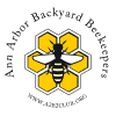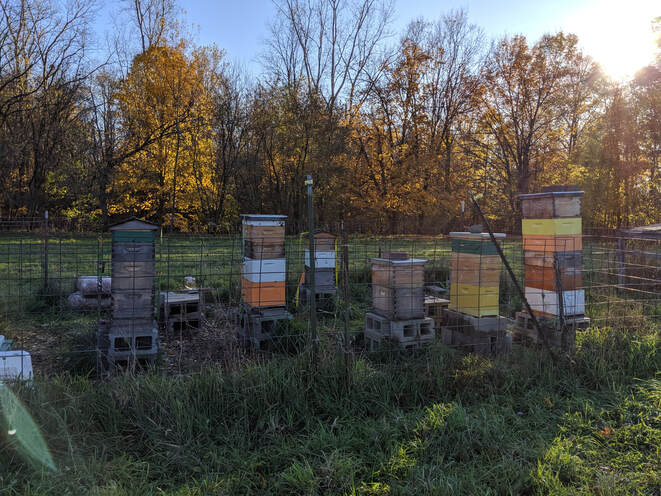 Aster In Michigan, basically the last call for nectar in the environment is mid-to-late September. This is when goldenrods and asters stop blooming. While some beekeepers choose to harvest this late-season honey and then feed their bees thicker 2:1 sugar syrup to build back up their winter stores, many just leave this odoriferous honey on the hives for their bees to enjoy during the winter. It’s important that every frame left behind in the hive for the winter has beautiful comb jammed full of honey that is easily accessible to the bees and that there are no gaps between the frames (i.e. not drawn out foundation frames) that would prevent bees from reaching their honey stores. This may require beekeepers to condense, rearrange, and even combine their hives in the fall. Remember, a hive needs between 60-100lbs of honey to survive the winter! Bombs Varroa, varroa, varroa. It doesn’t matter how sick you are of hearing about Varroa, they are still a major concern for beekeepers, especially in the fall. To reiterate how Varroa reproduces, it does so exponentially, with the peak mite population right at the decline of the honey bee population in the fall. So, even if you’ve tested all spring and summer and found low mite numbers (0-3 mites/100 bees or 0-9 mites/300 bees), YOU MAY STILL SEE A FALL EXPLOSION OF MITES in your colonies. Also of concern are mite bombs which are hives that haven’t been managed for mites all year and now collapse, sending infected bees out to overrun surrounding hives. So, you’re saying, no problem, I’ll just plan on treating all my hives in the middle of September, not testing, and calling in good, right? Wrong! Every area is a little different and if you treat a little too early or a little too late to control your mites, you can still suffer winter losses due to mites. Also, you should always test before and after a mite treatment to make sure your mite treatment was effective. Combining In addition to making sure your hives are disease-free, well-fed, and Varroa-controlled, fall is also the time to equalize your hives. What I mean by equalize is not going into winter with strong hives and weak hives, but combining and distributing frames such that all of your hives are robust going into winter. One bit of advice some beekeepers use is not to combine weak hives with weak hives, but to combine weak hives with strong hives for better success, while others like to combine 2 weak hives in the hope of making one stronger hive. When combining 2 hives, a single sheet of newspaper should be used between the boxes of the 2 hives so that the bees are gradually introduced to each other. Often the queen of the weak colony is dispatched before the combination, but this may not be necessary as often the bees sort out which queen they want to keep. Also, combining hives is a good way this late in the season to get a queen into a queenless or laying worker hive. Additional Information: https://www.honeybeesuite.com/fall-management-of-honey-bees/ https://www.youtube.com/watch?v=k1RcADkd_RA
1 Comment
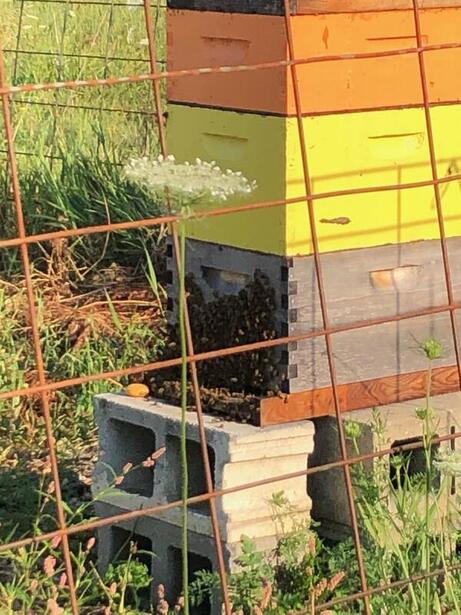 August Springtime signifies the honey flow, growth, reproduction for a honey bee colony. The hot months of summer are when honey bees begin winter preparations. The queen may slow down in her egg laying and the focus of the hive tips away from brood rearing to foraging for nectar and storing honey for the winter. However, brood rearing isn’t completely abandoned because this is also the time when the hive is making winter bees, bees with larger fat stores whose physiology allows them to live months instead of weeks. Drone production also slows as swarm season ends and the need for drones diminishes. Summer is also a tricky time for queens. If a hive has a late swarm or loses a queen, it may be too late in the season for them to make a new queen on their own and the beekeeper may have to introduce a queen into the queenless hive instead. You may also see a phenomenon called bearding on your hives in the summer. This is when bees come out of the hive and cover the outside of the hive, some staying near the entrance to fan and cool the hive. This behavior helps to keep the inside of the hive cool. Burglary Another concern of beekeepers in the summertime is the dearth. A dearth is when there is a lack of natural floral resources to provide the bees with nutrition (i.e. pollen and nectar). It is important to know what is blooming in the 6 miles around your apiary and when. Local weather can very so much that beekeepers even within a few miles of each other may have very different floral resources for their bees. Many beekeepers will feed their hives 2:1 sugar syrup in the late summer to bolster their winter honey stores, especially if there are drought conditions. With the dearth also comes robbing. Robbing is when either other honey bees or nectar-seeking insects like wasps will invade a weak hive and steal the stored honey from that hive, further weakening and often killing the colony being robbed in the process. Robbing screens can help with this problem as well as using feeders that are completely enclosed inside the hive. Caution Just as the population of a honey bee hive starts to wane in the summer, the Varroa mite populations in a hive begin to peak. If no steps are taken to test for and treat mites when the mite population spikes, then a beekeeper may find themselves with a dying colony in the fall. It is important to note that not all mite treatments can be used when honey supers are on the hive or when temperatures are above 85 degrees Fahrenheit, so it’s important to read the labels of products you are thinking about using. The label is the law! More information: https://www.honeybeesuite.com/summer-nectar-dearth-honey-bee-management/ https://cals.cornell.edu/pollinator-network/beekeeping/beekeeping-calendar-northeast 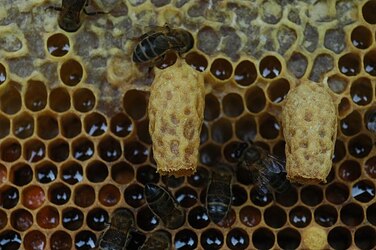 Absent? One of the most common problems beekeepers think they face is a colony that is queenless. I say “think” because sometimes a seemingly queenless colony isn’t actually queenless. Just understanding the biology behind a queen’s development will help determine if a hive is truly queenless. First, let me say that you don’t always have to see your queen when inspecting a hive. If you spot eggs (single eggs laid in the middle of the bottom of a worker-sized wax cell), then you had a queen in that hive at least 3 days ago. Similarly, if you see small, C-shaped larvae, then your hive had a queen at least 6 days ago. If you only spot big, fat larvae or capped brood cells, depending on the time of year (you may not see eggs in the fall), you may have a queen issue. Also, multiple eggs in cells or eggs laid on walls of the cells or drone brood sticking out of worker-sized cells may be an indication of a laying worker hive that has been queenless for at least 6 weeks. Brief The development cycle of a queen from an egg to an adult is the quickest of all the honey bee castes, lasting only 15-16 days. An egg is an egg for 3 days, then hatches into a larva. A larva that will develop into a queen is fed only royal jelly by the nurse bees and is a larva for 6 days. On the 9th day, the cell of a queen, much larger than that of a worker or drone (looks like a peanut hanging off the side or bottom of the frame), is capped. Inside the capped cell, the queen pupates rapidly, emerging (eclosing) from the cell as an adult on day 15 or 16. Cells of queens that have successfully emerged have little, round hatches at the bottom of the cell. Cells of queens that have been killed by other, faster eclosing queens or that have not successfully developed and whose cells were dismantled by the worker bees have oblong holes on the side of the cell. Closure (E-) Right after eclosure, a queen is what is called a virgin queen. She has not mated with any drones and therefore cannot lay fertilized eggs. Before she can go on one or more mating flights, however, she must orientate herself in the hive for about a week and allow her reproductive organs to mature. Her mating flights will be taken in the next 1-2 weeks (weather depending), and then she will typically require close to an additional week to start laying fertilized eggs. All up, from the time a queen ecloses to when she lays her first egg can be up to a month! That doesn’t include the just over 2 weeks from egg to eclosure. Patience is key when allowing a hive to make a new queen from an egg or young larva. More Information: https://extension.psu.edu/an-introduction-to-queen-honey-bee-development 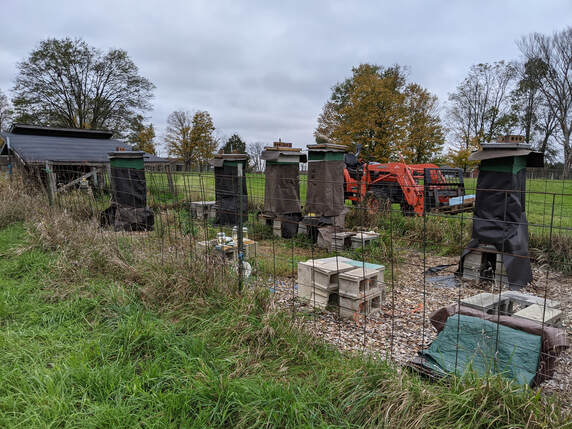 Advance Preparing a hive for winter starts in July with ensuring your bees are healthy (i.e. Varroa mite levels are under control), have ample resources (i.e. honey stores) to last them through the winter, and are queenright and strong (i.e. much easier to for 1 strong, large hive to survive winter than 2 small, weak hives). This means that you may have to feed your hives 2:1 sugar syrup (2 parts sugar to 1 part water) to bulk up their honey stores, and combine weak hives (particularly ones that are queenless, with queenright hives). Many beekeepers will typically also add a windbreak to their apiary in the winter. Common windbreaks include tarps, hay bales, and burlap. Bluster In addition to preparing your bees for winter, many beekeepers in colder climates also choose to prepare their hives for winter to help their bees survive the cold, resourceless months. There are two schools of thought when it comes to this hive preparation: ventilation and insulation. If a beekeeper keeps bees in typical, thin-walled Langstroth hive boxes with an inner cover and telescoping outer cover, and does nothing to prepare the hive structure for winter, they may have moisture problems in the hive. The bees form a cluster during the winter which they keep warm by flexing their wing muscles. Heat and water vapor are generated in this process and will rise to the top of the hive where they will condense on the cold inner and outer covers. The water will then rain down on and chill the bees. Condensation Proponents of ventilating a hive solve this problem by adding a quilt box on top of the hive (under the covers) to trap moisture and an upper entrance to allow air flow to remove the moisture from the top of the hive. They also typically wrap their hives in thin, black tar paper (i.e. roofing felt) to take advantage of the rays of the winter sun to “heat” the hive. Advocates of insulating a hive in the winter argue that upper ventilation lets out all of the heat because in addition to water vapor, heat also rises. They prefer to not have a quilt box or upper entrance and instead wrap their hives in thick foam board wrapped in black plastic and especially add insulation to the top of their hives to prevent the condensation of water vapor over the bee cluster. More Information: Winter Preparation Bees: www.honeybeesuite.com/how-to-prepare-your-hives-for-winter/ Ventilation: https://www.honeybeesuite.com/how-to-wrap-a-hive/ Insulation: https://www.beeculture.com/winter-management/ 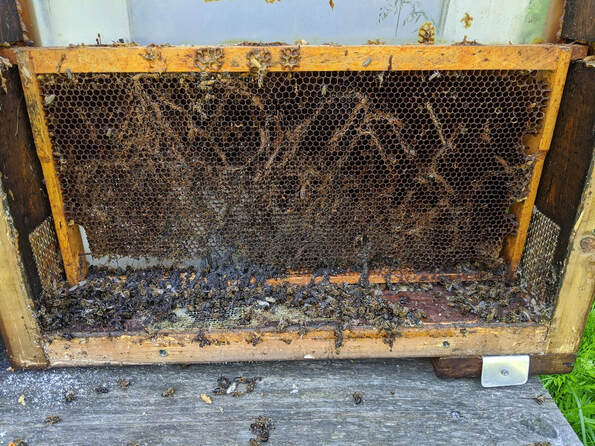 Achroia grisella (The Lesser Wax Moth) As I’ve said before, wax or comb is an invaluable source for a beekeeper. One of the challenges that faces a beekeeper is how to store this precious resource in order to preserve it for use in future hives. Two factors to consider for frame storage are moisture which can cause frames to mold and most importantly wax moths. As hive beetle larvae can destroy improperly stored frames of honey, wax moths and their larvae can destroy all frames containing comb, though they show a preference for older, darker comb that has contained brood. Best There are two ways to store comb that are more successful and full-proof ways to prevent wax moth damage. The best way to store wax frames is in a freezer. This not only kills wax moth eggs that are present in all comb that has been inside a hive for any length of time, but will also protect the comb from pests such as mice and from mold. Unfortunately, most beekeepers do not possess large enough freezers to hold all of their excess comb. In this case, the second-best method of storage is to stack boxes of frames such that they are protected from pests (i.e. with a telescoping outer cover on the bottom and top of the stack), and to apply moth crystals (or Para-Moth, NOT MOTH BALLS) according to the label. Crisscross The two easiest ways to store frames of wax do not require a freezer or the purchase of chemical treatments, but are sometimes not as successful. The first is to store the boxes containing the frames in an open-air structure (for ventilation), on their sides (so that sunlight and air flow may penetrate between the frames), and in a crisscross pattern (with each box facing ninety degrees to the one above and below). Wax moths do not like light or the flow of air, so this storage will help deter them, though may not work for frames containing darker brood comb. The final way to store frames is to place the boxes of comb on strong hives that will be able to patrol the comb and keep the frames free of wax moths. With this final method, a beekeeper should check the storage hives about every week or so to make sure they are still strong and that wax moths have not moved into the frames of the stored boxes. More Information: https://www.honeybeesuite.com/how-and-where-should-i-store-empty-supers/ https://glorybee.com/blog/top-3-ways-to-prevent-wax-moths/ 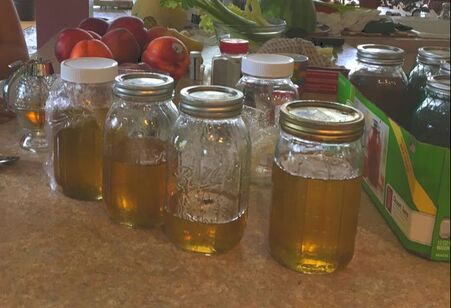 Amazing Honey has many amazing properties. At the proper water content, honey that has been properly stored will never expire or go bad. In fact, honey that has been recovered from Egyptian tombs and is over 2,000 years old is still edible. One of the reasons for this longevity is that honey is antimicrobial, meaning that organisms such as bacteria and fungi do not live and grow in honey (the one exception to this is botulism spores). Three factors that make honey antimicrobial are 1) the fact that it is slightly acidic, 2) that it is a supersaturated solution, and 3) that it contains compounds such as hydrogen peroxide. Honey has been used for thousands of years medicinally to aid in wound and burn healing. Blend Bees make honey during the spring, summer, and fall, but typically only consume it during the winter and early spring, preferring to consume fresh nectar and pollen in the form of bee bread (pollen mixed with nectar or honey) during the honey flow. Honey can be thought of as nectar that has been processed for long term storage. Unlike when bees store the pollen from multiple species of flowers in the same cell, bees only store nectar from the same species of flower in the same cell. Also, honey bees typically store all the nectar obtained from a single floral source in the same area of the hive or same frame. This results in different colors of honey depending on the floral source and different varieties of honey (ex. clover honey vs orange blossom honey). Crop Though I think it’s funny to think of honey as bee vomit, honey is actually the substance produced by bees when regurgitated nectar from their crop (or honey stomach) is exposed to the enzyme invertase produced by the bee’s salivary gland which converts the sugar sucrose from nectar into glucose and fructose. The liquid honey which is now made up of glucose and fructose is stored in the wax cells of the hive and dehydrated by the bees until its water content is at or below 18.6%, at which point the wax cells are capped. More Information: https://honey.com/about-honey/how-honey-is-made 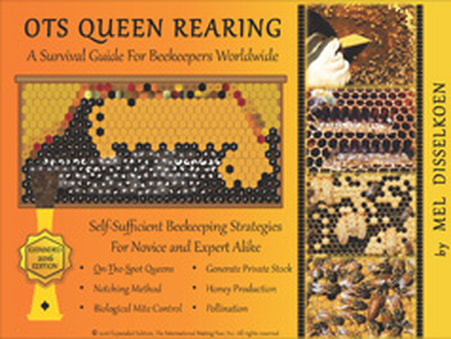 After Solstice OTS refers to a technique refined by queen-rearing expert Mel Disselkoen called On-The-Spot queen rearing. This technique is used with a hive-splitting system to encourage queenless colonies to produce a new, robust queen. Mel developed the OTS system after studying other methods of queen rearing used by G.M. Doolittle and Dr. C.C. Miller. Benefits of using the OTS system include expanding your apiary, increasing honey yield, and producing post-solstice queens (queens eclosed after the summer solstice/end of June in MI) that typically have better winter survival rates. Bottom Wall The crux of the OTS method is using a notching method to elongate cells with either eggs or less than 3-day-old larvae to make room for the bees to turn these cells into queen cells. To do this, you would press the sharp edge of the flat, prying end of your hive tool straight down into the wax bottom wall of the cells and then tilt your hive tool down and back to flatten the area underneath the cells. This artificially elongates the cell and again gives space for the bees to create a queen cell. Cells Here are some tips to remember when using the OTS method. Never allow a split or a start to make a new queen, but encourage full-sized hives with a minimum of 4 frames of brood to make new queens. OTS may encourage bees to produce many queen cells, but you want to leave only 1-2 of the largest cells to discourage fighting amongst the virgin queens. Notching will only encourage bees to make queen cells if there is no queen present in the hive. Bees need an abundance of food and nurse bees to rear a robust queen. More Information: https://www.mdasplitter.com/ 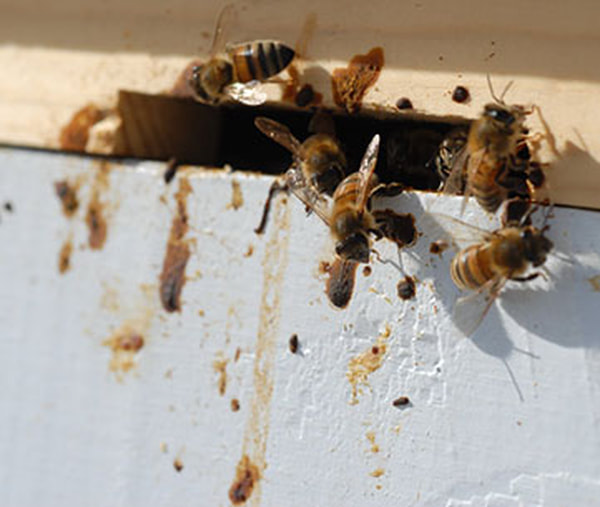 https://beeaware.org.au https://beeaware.org.au Ailment A big thing to watch for in the spring is signs of disease in your hives. Cool, wet springs often bring brood diseases such as sacbrood, chalkbrood, Nosema/dysentery, and European foulbrood (EFB). Sacbrood is a viral disease where the larvae turn brown and pointy. Chalkbrood is a fungal disease where the larvae look like black, white, or gray mummies. Nosema apis is a microsporidian parasite that can cause dysentery (diarrhea) in bees that can be seen as tan to brown streaks on the tops of the frames and around the hive entrance. Bees can also get dysentery from too much ash in their diet or too much moisture in their hive. EFB is a bacterial disease that causes the larvae to look yellow, twisted, and “skeletal.” Treatment of these spring diseases includes feeding sugar syrup, taking care of moisture problems in the hive, and sometimes requeening the hive. Varroa testing and treatment should also begin in the spring. Backfilling In the early spring before many plants are blooming, beekeepers may also want to feed their colonies. Feeding pollen, the bee’s source of protein, can encourage your queen to lay more eggs. You may also want to feed 1:1 sugar syrup to encourage comb production if you have undrawn foundation frames. Sometimes feeding too much sugar syrup may induce a swarm if the bees choose to store the syrup in the brood chamber (called backfilling) and the queen runs out of space to lay her eggs. Copy Spring is the time of year where honey bees, like most animals, reproduce. Though the queen lays eggs throughout most of the year to replenish and boost the population of the colony, the true, natural reproduction of the honey bee colony is a swarm. If you hive survived the winter, has a laying queen, and has pollen coming in, you will need to watch for signs that your colony may be ready to swarm. Since swarming causes the loss of bees and introduces a non-native species into the environment, beekeepers try to prevent swarms either by giving their bees more drawn comb or by splitting their colonies. Another technique that may be useful in the spring is called reversing. This is moving an empty box of frames from the bottom of the hive to the top. The bottom box may be empty (no bees) because the bees move up to the top of the hive during the winter. This is also a good time to replace frames of old, dark comb from the empty box with fresh foundation frames. More Information: https://pollinator.cals.cornell.edu/sites/pollinator.cals.cornell.edu/files/shared/documents/Beekeeping%20Calendar%20for%20the%20Northeast.pdf Array
There are almost an infinite number of ways to feed your bees. You can feed them inside or outside of the hive using a wide array of commercial or homemade feeders. Here I will go over just a very small number of feeders and their uses. There is no “best” choice. There are pros and cons to each and it is all in what works best for you. Some hold more syrup and don’t need to be filled as often, while others are easier to fill or to keep clean. One constant over all ways to feed you bees is that feeding inside the hive ensures that particular hive gets the nutrition and is less likely to attract robbers, pests, and bees from other hives which also means it is less likely to spread disease than community feeders outside the hive. Beetles There are two forms that pollen or pollen supplement/substitutes can take. One is a dry powder and the other is a moist, doughy pollen patty that has the pollen part mixed with sugar syrup. Typically, the patties are fed on top of the frames inside a hive and the powder is fed in a feeder outside the hive. One drawback to feeding the patties inside the hive is that they can attract pests like small hive beetles. One drawback to feeding the powder outside the hive is that you will need to purchase or make a feeder and it will attract pests and bees from other colonies outside of your apiary. Closed Sugar syrup can be fed from either an open or closed container. For example, frame feeders go right in the hive in place of a comb frame and have no lid. One drawback to them is that the bees may drown if you do not have something floating on top of the syrup. Also, since they are open, they can get dirty with debris, mold, etc. Top feeders are similar in that they are open feeders inside the hive, only these are larger and go between the top box and the inner cover. Again, the main disadvantage of a top feeder is bees drowning, but most commercial top feeders have designs to prevent this. Mason jars with very small holes poked in the lids are by far the most common feeding method for hobby beeks for sugar syrup. These can be placed inside the hive or outside the hive. Commercial beekeepers typically fill 5 gallon buckets with holes in the lids with sugar syrup and either place these over the hole in the inner cover or on stands outside the hives. More Information: https://www.honeybeesuite.com/what-type-of-honey-bee-feeder-is-best/ 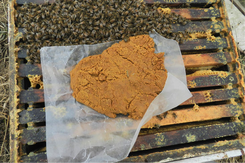 Aware As a beekeeper, it is often said that you also have to become a botanist and a meteorologist so that you not only know what is blooming in your immediate area and when it is blooming, but also to know your local weather patterns so that you are aware of situations that may prevent your bees from accessing what is in bloom. Both the plants available for your bees and weather conditions during the year are hyper localized based on a number of factors including geography and whether you are in an urban, suburban, or rural area. What is blooming in your area in early May is likely very different from what is blooming just a few miles down the road. It is important to keep this in mind to know when your colonies need to be fed. Bloom Honey bees get all of their nutrition from flowers, so when there are no plants in bloom, bees must rely on either their food stores or the beekeeper to survive. When there are no nutritional resources available in the environment, this is called a dearth. Typical times for a dearth in MI are the winter, late summer, and late fall, but there can also be a kind of dearth in the spring if the weather is too cold and wet for bees to access the blooming trees, shrubs, and plants. Concentration The 2 nutritional sources for bees are pollen and nectar. Beekeepers may need to feed either pollen, pollen substitute (a protein rich fake pollen), or pollen supplement (a protein rich substance containing some real pollen) in times when pollen is scarce but the bees are rearing a lot of brood, like in the springtime. Some beekeepers will also feed 1:1 sugar syrup as a nectar substitute in the spring until the bees stop taking it which indicates they are getting adequate nectar from the environment. Typically, 2:1 sugar syrup is fed if there is a fall dearth to help bulk up winter honey stores. Since bees will not take sugar syrup in the winter, many beekeepers put dry sugar or fondant in their hives over the winter to ensure their bees won’t starve. NOTE: Never feed sugar syrup with honey supers on. This will lead to sugar syrup “honey.” More Information: https://pollinators.msu.edu/resources/beekeepers/feeding-honey-bees/ |
AuthorJen Haeger is a new master beekeeper and board member of A2B2. Archives
August 2022
Categories
All
|

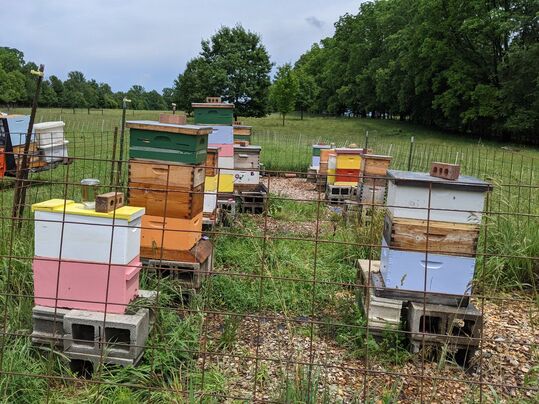
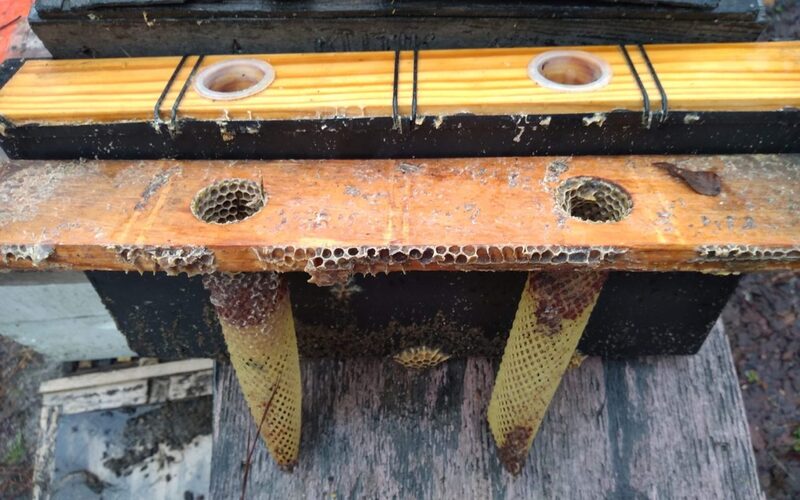
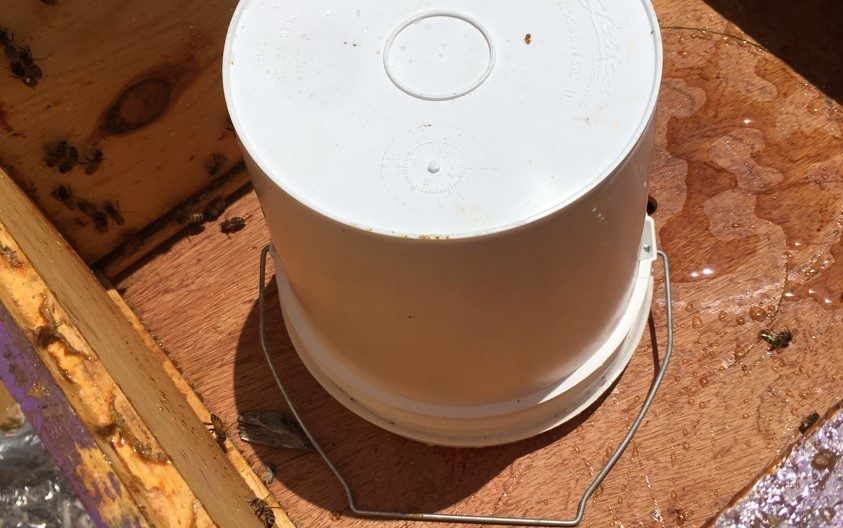
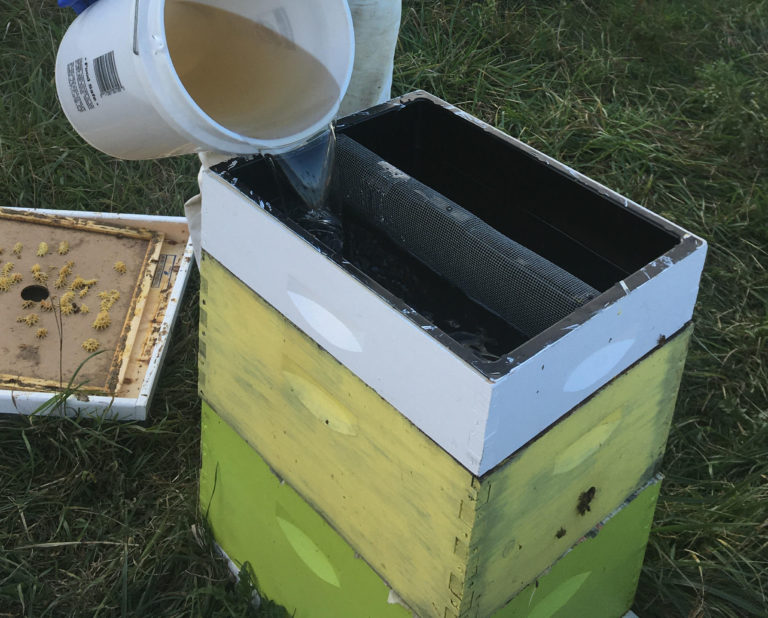
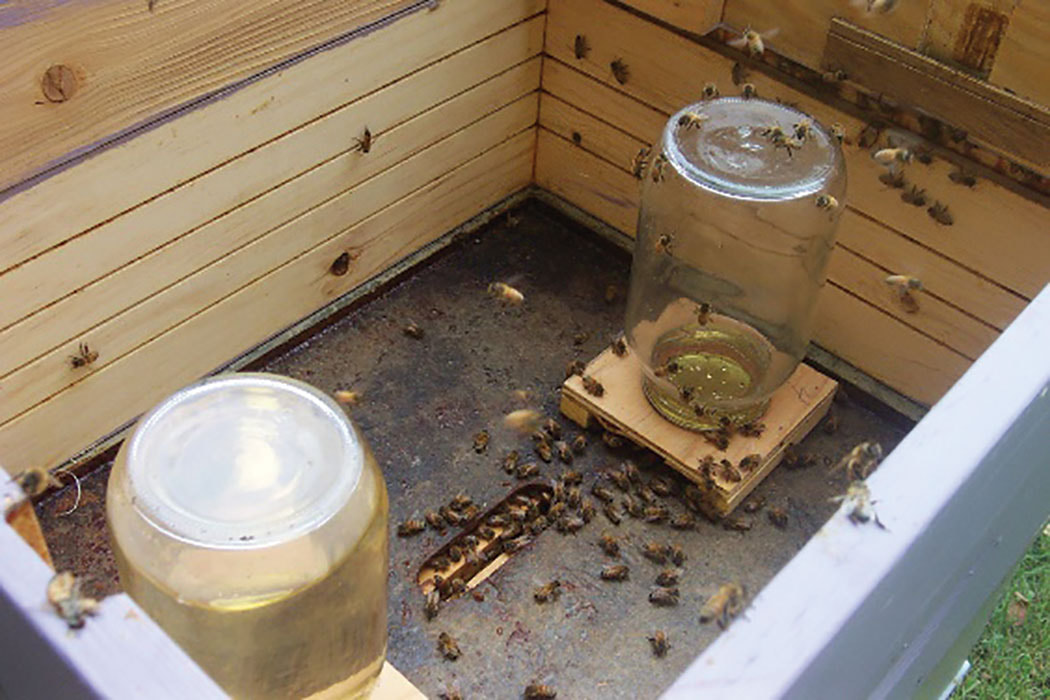
 RSS Feed
RSS Feed
